To celebrate Easter (which lasts for eight days starting Easter Sunday), we have decided to bring you a delectable hybrid which we all calling the Krofrit. The Cronut, as trademarked by Dominique Ansel, is now a pastry in its own right, and a popular one at that. When the bakery was closed down recently due to a mouse problem, it made it into the news all over the world. We have decided to call our hybrid a Krofrit, simply because when Mishka first heard the word Cronut she thought it had something to do with being nuts about Croatia. We have taken the Croatian words for croissant and doughnut, kroasan and fritule to make the word krofrit. There is no historical justification for this that we know of. While the Croats may be responsible for the quintessentially French cravate, most of the evidence suggests that the quintessentially French croissant has more of an Austrian origin. You can read all about the history of the croissant in Jim Chevallier's book, August Zang and the French Croissant.
Krofrits are very simple to make if you know how to make croissants. Instead of cutting out triangles and rolling them, you cut out rounds and fry them. If you've never made croissants, this recipe (which has lots of nice photos to help you along) will make enough dough for a dozen krofrits and the next morning's breakfast croissants. (To make croissants for the next day, bake for 18 minutes, cool, set aside in an airtight container, and bake again the next morning for another 15-18 minutes.)
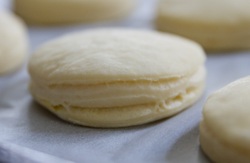
There are two things to keep in mind when cutting out your krofrits. First, size. We used an eight centimetre diameter cutter. If you want a larger krofrit, you may want to consider putting a hole in the centre to ensure it cooks all the way through. Secondly, do not be tempted to use a crinkled edge to make the krofrit prettier. We tried this. It doesn't work. It impedes the dough from rising. The dough needs to rise (as pictured above) for two hours or so. Otherwise, your krofrit will look rather flat. It'll still be tasty, but it's not the best result.
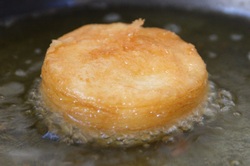
When you fry your krofrits use an oil that won't smoke, such as a vegetable oil. It'll need to be at least an inch deep. Use a bit of leftover pastry to check it's the right temperature - if it doesn't bubble around the pastry it's not hot enough. It shouldn't brown immediately either - if it does, lower the temperature.
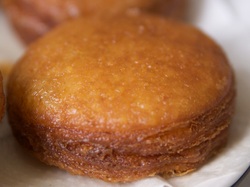
When cooked, the krofrit should be a golden brown. The top will look like a doughnut, the sides will have layers like a croissant. Drain on kitchen towel, then dust with cinnamon sugar.
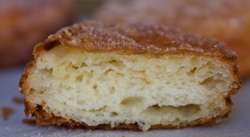
Krofrits are perfectly delicious unfilled but when filled they are arguably divine.
Part of the fun of krofrits is creating a personal filling, but to get you started here is Mishka's current favourite, a quick pregnancy-friendly chocolate mousse with morello cherries. (You should have enough left over for dessert the next evening.)
Mousse filling:
Whip 600ml of cream, add a 395g can of condensed milk, French cocoa according to taste (approximately 1/2 cup), and beat until combined. Mix in a jar of strained and pitted morello cherries (pre-soaked in brandy if you like).
When cool, cut your krofits in half and sandwich the mousse with them.
The krofrit can be topped with whipped cream or fondant, but one easy option is to merely combine icing mixture and water to make an icing that is doesn't run at room temperature. Warm it up in the microwave to flavour or colour it - we used a tablespoon of the cherry juice to kill two birds with one stone - and dribble it over your krofrit.
Bon appetit, or - as the Croatians say - dobar tek!
Mousse filling:
Whip 600ml of cream, add a 395g can of condensed milk, French cocoa according to taste (approximately 1/2 cup), and beat until combined. Mix in a jar of strained and pitted morello cherries (pre-soaked in brandy if you like).
When cool, cut your krofits in half and sandwich the mousse with them.
The krofrit can be topped with whipped cream or fondant, but one easy option is to merely combine icing mixture and water to make an icing that is doesn't run at room temperature. Warm it up in the microwave to flavour or colour it - we used a tablespoon of the cherry juice to kill two birds with one stone - and dribble it over your krofrit.
Bon appetit, or - as the Croatians say - dobar tek!
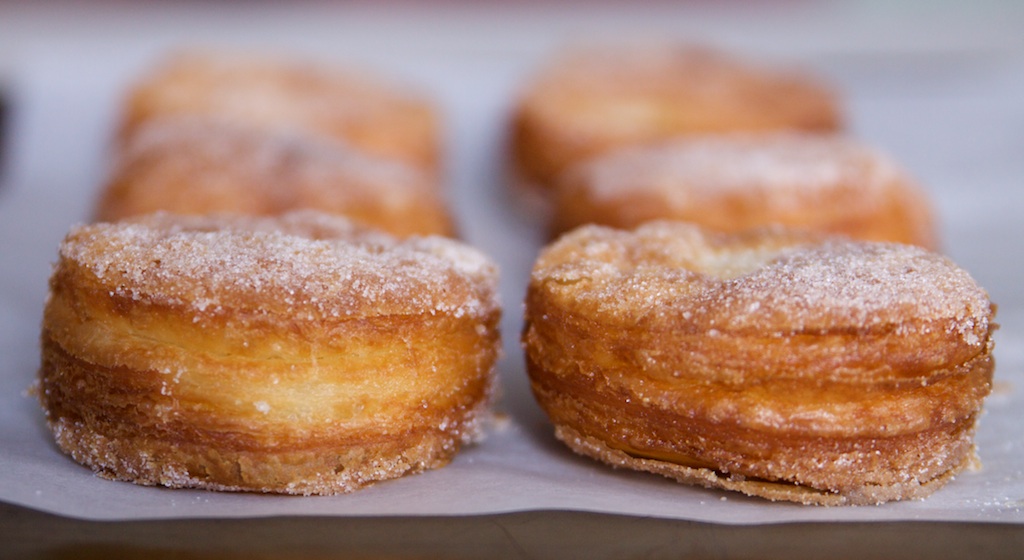
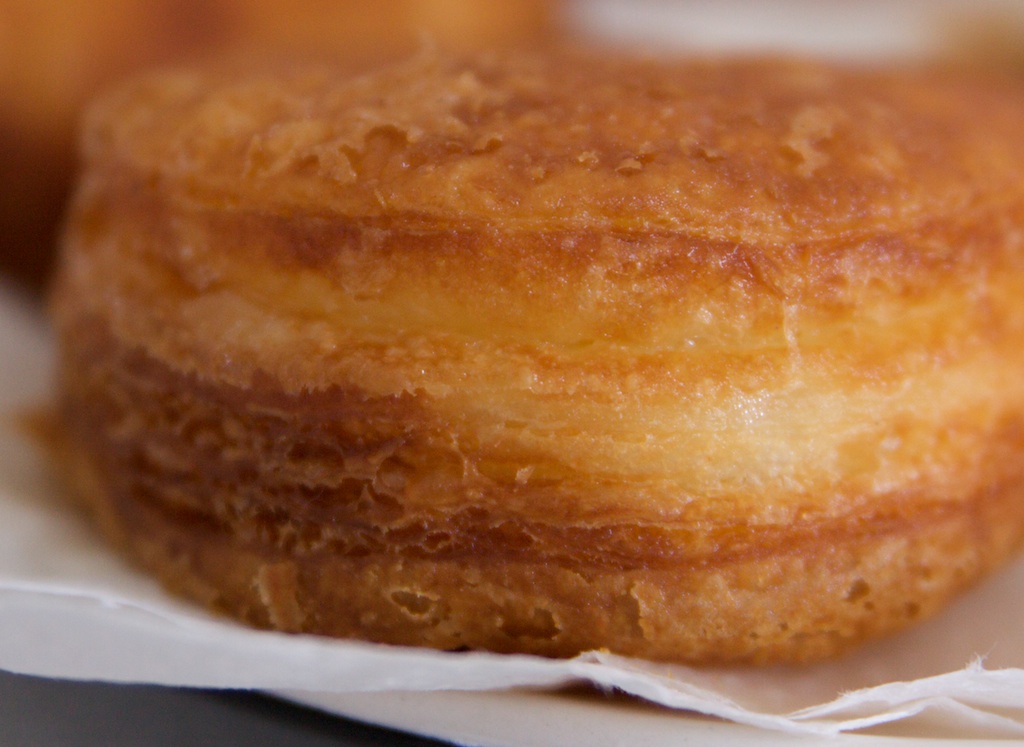
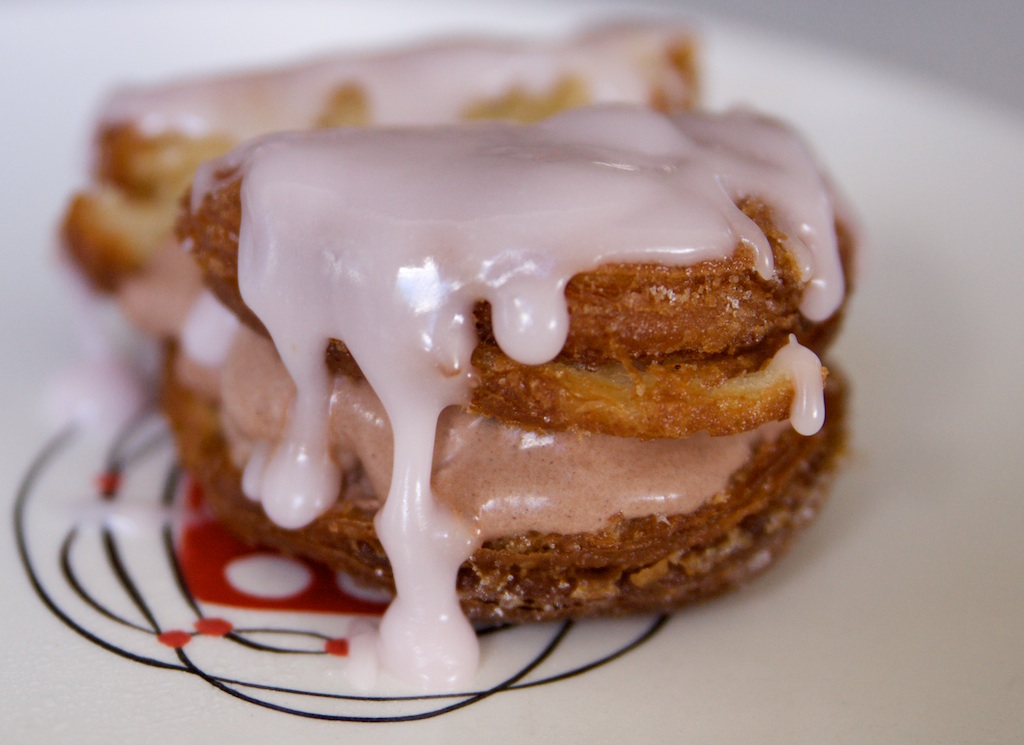
 RSS Feed
RSS Feed